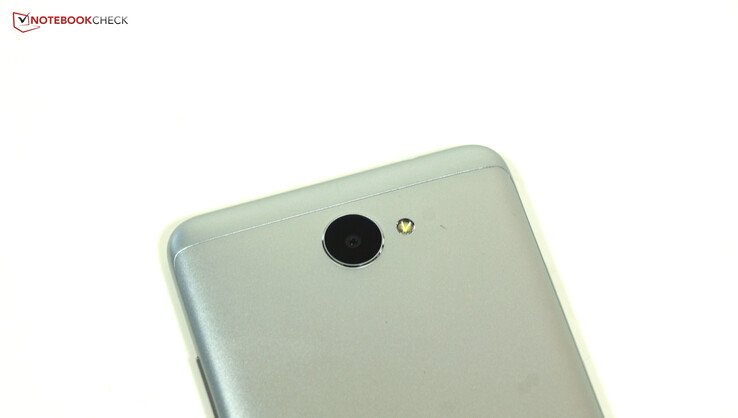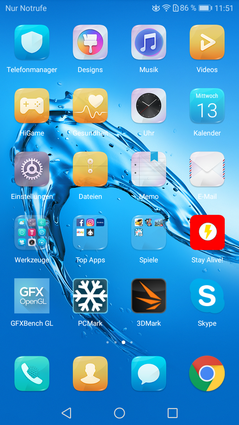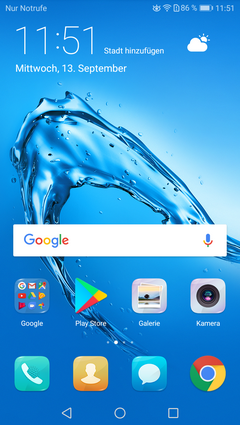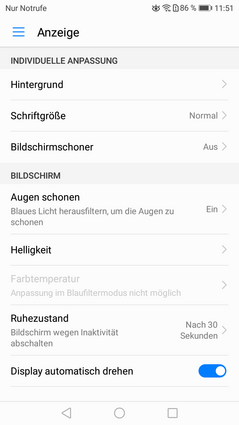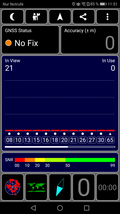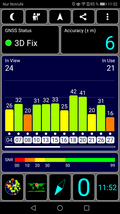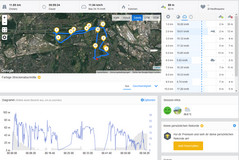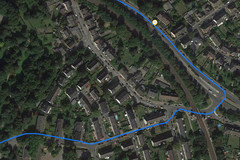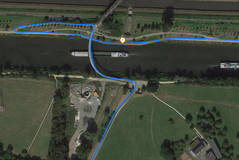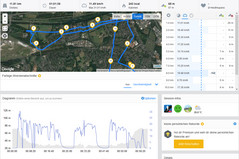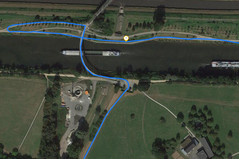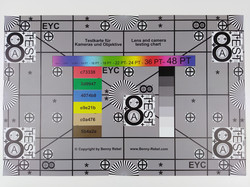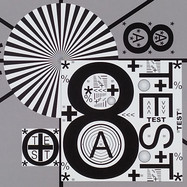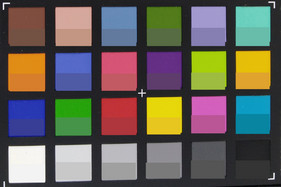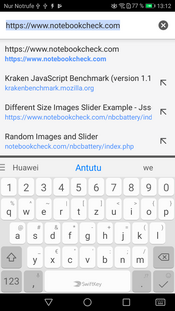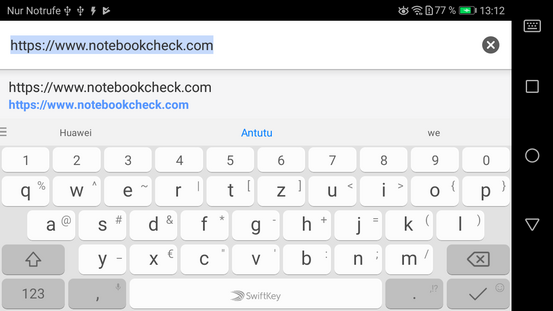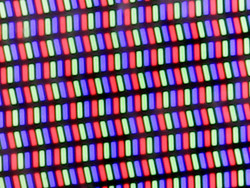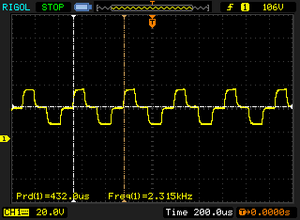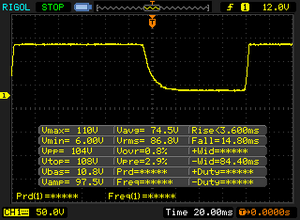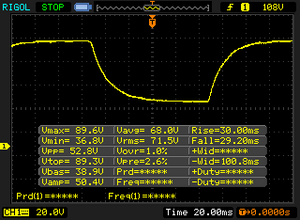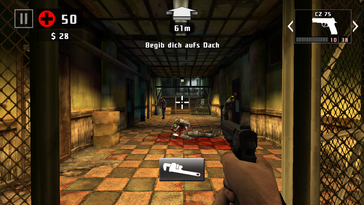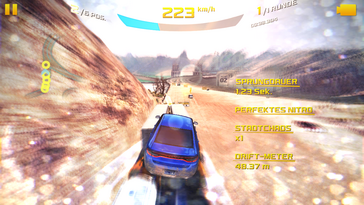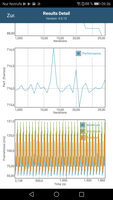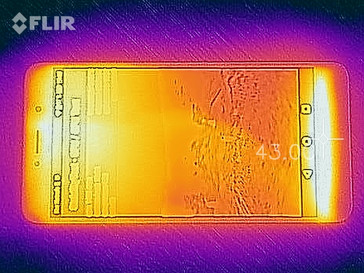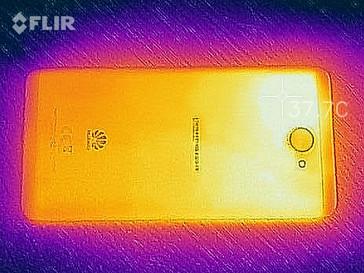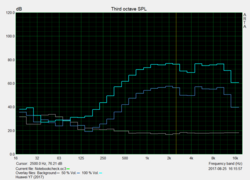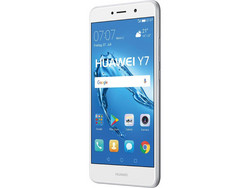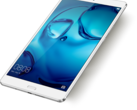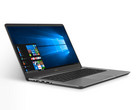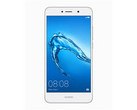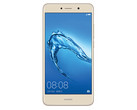Huawei Y7 (2017) Smartphone Review
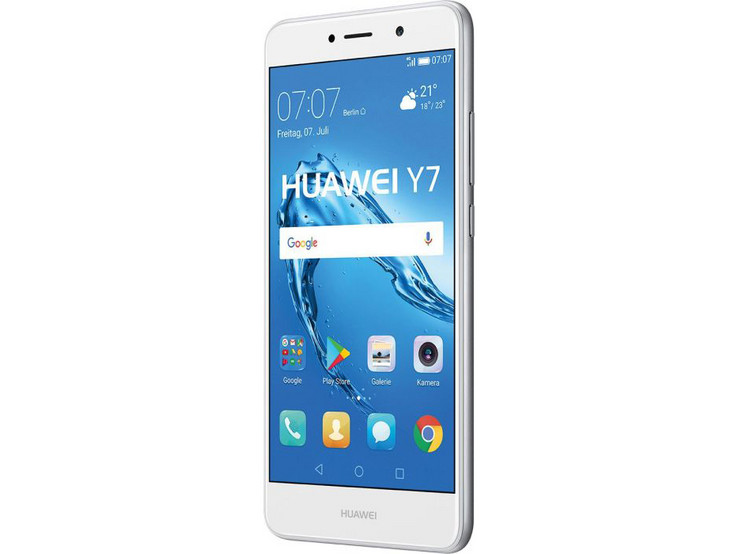
For the original German review, see here.
The Huawei Y7 is the latest addition to Huawei's affordable Y series. Since the manufacturer recently stated that it would not produce any more budget smartphones in the future, it might also be the last. But perhaps this refers to even more affordable smartphones, since the Huawei Y7 costs almost 200 Euros (~$238; starting from $210 in the US) after all. For that, you get a quite large battery, a metal case, and a 5.5-inch display with the Y7.
The smaller sibling, the Huawei Y6, was able to convince us in the test. Now we ask if the Y7 is a close relative that just turned out a little larger, or whether there are clear differences. We want to find out in the test. We also compare the Huawei Y7 with similarly large-sized and priced smartphones, such as the LG X power2, the Motorola Moto E4 Plus, and the Sony Xperia L1. As a slightly more expensive competitor, we have also added the Samsung Galaxy J7.
Case
The buyer must decide on the color: should it be the gray model with a black front, the one in the completely golden color, or perhaps the silver back with a white front as in our test unit. In any case, the non-removable back is made of metal and the edges are rounded. The Huawei Y7 fits into the hands very well. The bezels are very small on the right and left sides, and it has the classical wide edges above and below. At 165 grams (~5.8 oz), the Huawei Y7 is quite light, particularly considering the relatively large battery which, by the way, cannot be removed.
Pressure on the front becomes easily visible in the liquid crystal, but pressure on the back does not affect the screen. While the device can be twisted minimally, it does not creak and seems very stable otherwise. The workmanship is very good, and the transitions between the front and back cannot be felt.
Connectivity
With 2 GB of RAM and 16 GB of storage, the Huawei Y7 is on the same level as its smaller sibling and also as the standard of most other smartphones in this price range. The user has 10 GB available for data and apps, since the operating system is also installed. Unlike the Huawei Y6, the optional microSD card shares a slot with the second SIM card, so that you have to decide between dual-SIM and microSD. The microSD allows installing apps.
There is a regular micro-USB port at the bottom edge. A USB-C port is still rare in this price range, but the Xperia L1, for example, has one.
Software
While Huawei has installed Android 7 on the Y7, unfortunately, it is not kept very up-to-date. The security patches are from April 2017, so they are already almost 6 months old at the time of our testing. Even though Huawei's EMUI user interface is installed on top, it does not make any significant changes in the basic Android structure, so that the user should quickly find their way.
There are several pre-installed apps, and Huawei includes a large tool set, from a flashlight and service apps up to a Health app. Unfortunately, there are also several Free2Play games and pre-installed advertising apps on the smartphone, which the users will have to uninstall if they do not like them.
Communication and GPS
The Huawei Y7 offers WLAN according to the 802.11 b/g/n standards. More is rarely offered in this price class. Only the Samsung Galaxy J7, which is currently 60 Euros (~$71) more expensive, includes the faster 802.11-ac WLAN and can also access the less used 5-GHz band. If you compare the transfer rates in our standardized WLAN test, the Huawei Y7 is on the level of the price range. The times to load websites are also average, and the reception is fully present near the router. At a distance of 10 meters (~33 ft) and through three walls, the signal strength is still 3/4 and the websites load at the same speed as near the router.
In mobile networks, LTE Cat. 4 and with that a maximum of 150 MBit/s during download and 50 MBit/s during upload are supported. With six LTE bands, the Huawei Y7 also has average features when looking at the comparison devices. In Europe this should be sufficient, but in further away countries, it might be difficult to find an LTE network.
| Networking | |
| iperf3 transmit AX12 | |
| Samsung Galaxy J7 2017 | |
| Sony Xperia L1 | |
| LG X power2 | |
| Huawei Y7 | |
| Huawei Y6 2017 | |
| Lenovo Moto E4 Plus | |
| iperf3 receive AX12 | |
| Samsung Galaxy J7 2017 | |
| Sony Xperia L1 | |
| Huawei Y7 | |
| LG X power2 | |
| Huawei Y6 2017 | |
| Lenovo Moto E4 Plus | |
While we cannot be located indoors, it takes quite long outdoors to achieve an accuracy of 6 meters (~20 ft).
For our practice test, we pack the Huawei Y7 together with the Garmin Edge 500 professional navigation device into a backpack and take a bike ride with the mountain bike. The difference in the measured distance is only 40 meters (~131 ft), and the Y7 records our route really quite accurately. Even though we can clearly see that the Garmin Edge 500 has considerably more measuring points, for leisure time usage or even some more demanding tasks, you can use the Huawei Y7 for navigation.
Telephone and Call Quality
Huawei has installed its own Telephone app, which is very similar to that of Android. There are various tabs for calls, contacts, and favorites. When you open the app, you first see the numbers last called and the keypad.
The call quality on our side is very good: our conversation partner sounds very clear through the ear piece and the voice can be quite loud if necessary. However, the microphone records our voice quite muffled, but at least it does not distort it and can record very loud as well as quiet voices precisely. Through the speaker phone, the voice of our conversation partner still sounds good, but not quite as full anymore. Here the microphone can easily begin to distort, especially if we talk too loud.
Cameras
With 12 Megapixels in the back and 8 Megapixel in front, the Huawei Y7 takes a slightly different path than most of the comparison devices and also the smaller Huawei Y6: there are slightly less Megapixels in the back, but the front camera has a higher resolution.
The front camera takes very bright pictures, which can become its downfall on a cloudy day, when bright areas quickly become too bright. But of course, this is an advantage in dark surroundings, even if you really have to watch out to avoid blurring the pictures. Otherwise the pictures taken with the front camera are quite sharp, and the color reproduction also appears fairly natural.
The main camera in the back takes decent pictures, even though the auto focus has some problems with our stuffed bunny, focusing on a sharp background instead. While bright areas become easily too bright, the color representation turned out well. However, in dark surroundings the camera does not brighten enough, but the images remain sharp and have relatively little noise. Videos can be recorded at 1080p and 30 FPS. Here the exposure reacts to the surroundings very quickly and correctly, colors appear natural, and the image is quite sharp.
Overall, the main camera does a good job, but the front camera is too light sensitive for outdoor recordings. However, selfies also turn out good in darker surroundings.
We can confirm the good evaluation of the back camera in our lab test, where we take pictures under controlled light conditions. Although the color areas do not appear completely clean and are rather pale, those are rather details, and the image is reproduced very sharp.
Accessories and Warranty
Except for a charger, SIM tool and USB cable, there are no accessories in the box of the Huawei Y7. Huawei also does not currently offer any additional accessories in its shop.
Huawei offers 24 months of warranty on its devices. Please see our Guarantees, Return Policies & Warranties FAQ for country-specific information.
Input Devices and Operation
Huawei has installed the SwiftKey app as the standard keyboard. It offers dozens of setting options and statistics, and you can also adjust it with themes. You can optionally display an Emoji key and also a separate number row, you can change the size of the on-screen keyboard in five steps, and much more. Swiping as well as voice input are supported. Google's GBoard is also installed, so it is a matter of taste which keyboard the user prefers. In addition, you can also install keyboard apps from the Google Play Store.
The menu keys are on-screen, and you can change their sequence and also optionally hide them. There is also an optional simple mode where only few apps are available. You can activate a single-handed mode as well as voice control for taking calls. Huawei has also integrated a glove mode, so that you can operate the smartphone with thin gloves in cold temperatures.
The physical keys are on the right side of the case. The standby key and the volume rocker can be easily felt and have a clear pressure point.
Display
The 5.5-inch display of the Huawei Y7 has a resolution of 1280x720 pixels. With that, the device is at the level of the price range. Full HD displays can be found mostly only one price class higher. At an average of 456 cd/m², the display brightness is good, and at 92% the brightness distribution is very even, so that even larger color areas are evenly illuminated.
| |||||||||||||||||||||||||
Brightness Distribution: 92 %
Center on Battery: 467 cd/m²
Contrast: 1197:1 (Black: 0.39 cd/m²)
ΔE Color 4.3 | 0.5-29.43 Ø5
ΔE Greyscale 3.5 | 0.57-98 Ø5.3
Gamma: 2.35
| Huawei Y7 IPS, 1280x720, 5.50 | Lenovo Moto E4 Plus IPS, 1280x720, 5.50 | LG X power2 IPS, 1280x720, 5.50 | Samsung Galaxy J7 2017 Super AMOLED, 1920x1080, 5.50 | Sony Xperia L1 IPS, 1280x720, 5.50 | Huawei Y6 2017 IPS, 1280x720, 5.00 | |
|---|---|---|---|---|---|---|
| Screen | -10% | -21% | 20% | -13% | 21% | |
| Brightness middle | 467 | 425 -9% | 237 -49% | 454 -3% | 479 3% | 438 -6% |
| Brightness | 456 | 425 -7% | 237 -48% | 463 2% | 478 5% | 432 -5% |
| Brightness Distribution | 92 | 93 1% | 92 0% | 86 -7% | 94 2% | 90 -2% |
| Black Level * | 0.39 | 0.37 5% | 0.13 67% | 0.58 -49% | 0.13 67% | |
| Contrast | 1197 | 1149 -4% | 1823 52% | 826 -31% | 3369 181% | |
| Colorchecker dE 2000 * | 4.3 | 4.7 -9% | 5.5 -28% | 2 53% | 4.5 -5% | 4.8 -12% |
| Colorchecker dE 2000 max. * | 6.8 | 8.3 -22% | 12.7 -87% | 5.3 22% | 7.5 -10% | 11.4 -68% |
| Greyscale dE 2000 * | 3.5 | 4.6 -31% | 6.1 -74% | 1.7 51% | 4.1 -17% | 3.2 9% |
| Gamma | 2.35 94% | 2.17 101% | 2.07 106% | 2.1 105% | 2.03 108% | 2.23 99% |
| CCT | 7273 89% | 7445 87% | 7943 82% | 6394 102% | 7139 91% | 7090 92% |
* ... smaller is better
Screen Flickering / PWM (Pulse-Width Modulation)
| Screen flickering / PWM detected | 2315 Hz | ≤ 14 % brightness setting | |
The display backlight flickers at 2315 Hz (worst case, e.g., utilizing PWM) Flickering detected at a brightness setting of 14 % and below. There should be no flickering or PWM above this brightness setting. The frequency of 2315 Hz is quite high, so most users sensitive to PWM should not notice any flickering. In comparison: 53 % of all tested devices do not use PWM to dim the display. If PWM was detected, an average of 17915 (minimum: 5 - maximum: 3846000) Hz was measured. | |||
At 0.39 cd/m2, the black value of the display is average. The resulting contrast ratio is 1197:1, which is not a bad value. However, the Huawei Y6 has shown that it can also be done much better. Colors do not appear particularly bright on the display, but are also not too pale. An optional blue filter lowers the amount of blue light of the display and is supposed to help you fall asleep. It can even be activated by the time of day. If it is turned off, you can also manually adjust the white balance, either using three preset steps or smoothly. Huawei uses pulse width modulation to darken the screen in low brightness settings, which means that the screen is simply turned on and off in very quick succession, so that the image appears darker to the human eye. In the Huawei Y7, this is done with a very high frequency, so that most people should not be able to notice this.
We are also testing the display of the Y7 in the lab with the CalMAN software and the spectral photometer using the Standard and Warm white balance settings. In the Warm mode, the color display is indeed closer to the reference color space, and in the Standard Mode, there is a strong blue tint. However, in the Warm mode, the representation of the color space is very limited in the range of blue colors.
Display Response Times
| ↔ Response Time Black to White | ||
|---|---|---|
| 18.4 ms ... rise ↗ and fall ↘ combined | ↗ 3.6 ms rise | |
| ↘ 14.8 ms fall | ||
| The screen shows good response rates in our tests, but may be too slow for competitive gamers. In comparison, all tested devices range from 0.1 (minimum) to 240 (maximum) ms. » 35 % of all devices are better. This means that the measured response time is better than the average of all tested devices (21.5 ms). | ||
| ↔ Response Time 50% Grey to 80% Grey | ||
| 59.2 ms ... rise ↗ and fall ↘ combined | ↗ 30 ms rise | |
| ↘ 29.2 ms fall | ||
| The screen shows slow response rates in our tests and will be unsatisfactory for gamers. In comparison, all tested devices range from 0.2 (minimum) to 636 (maximum) ms. » 95 % of all devices are better. This means that the measured response time is worse than the average of all tested devices (33.7 ms). | ||
During cloudy days, you can easily use the Huawei Y7 outdoors. However, in bright sunlight, the very reflective display becomes an obstacle. The brightness sensor works well and finds the right setting quickly and reliably.
When viewing from the side, you can even notice with the naked eye, that the brightness diminishes quite a lot from particular viewing angles, even though you can still recognize the contents. Our camera recordings confirm this impression.
Performance
The SoC Qualcomm Snapdragon 435 now used in the Huawei Y7 came on the market 18 months ago. This in itself is remarkable, because usually Huawei uses SoCs from its own in-house HiSilicon production. The built-in SoC has eight computing cores with a clock speed of up to 1.4 GHz each. With this, the Y7 is well equipped in its price range and even manages to pass the more expensive Samsung Galaxy J7 at times. Depending on the benchmark, the performance difference to the smaller Y6 and the other similarly priced devices is considerable. In everyday life, the navigation through the menu is very smooth and changing between apps is also very fast.
As the graphics solution, a Qualcomm Adreno 505 with a 450-MHz clock speed is used. According to the manufacturer, it is compatible with all the current graphics connections, which is important for the smartphone in order to be future-proof. The Huawei Y7 is also above the level of its class in terms of the graphics performance, reaching for example a 50% better performance compared to the Motorola Moto E4 Plus.
| AnTuTu v6 - Total Score (sort by value) | |
| Huawei Y7 | |
| Lenovo Moto E4 Plus | |
| LG X power2 | |
| Samsung Galaxy J7 2017 | |
| Sony Xperia L1 | |
| Huawei Y6 2017 | |
| PCMark for Android | |
| Work performance score (sort by value) | |
| Huawei Y7 | |
| Lenovo Moto E4 Plus | |
| LG X power2 | |
| Samsung Galaxy J7 2017 | |
| Sony Xperia L1 | |
| Huawei Y6 2017 | |
| Work 2.0 performance score (sort by value) | |
| Huawei Y7 | |
| Lenovo Moto E4 Plus | |
| LG X power2 | |
| Samsung Galaxy J7 2017 | |
| Sony Xperia L1 | |
| Huawei Y6 2017 | |
| Geekbench 4.4 | |
| 64 Bit Single-Core Score (sort by value) | |
| Huawei Y7 | |
| Lenovo Moto E4 Plus | |
| LG X power2 | |
| Samsung Galaxy J7 2017 | |
| Sony Xperia L1 | |
| Huawei Y6 2017 | |
| 64 Bit Multi-Core Score (sort by value) | |
| Huawei Y7 | |
| Lenovo Moto E4 Plus | |
| LG X power2 | |
| Samsung Galaxy J7 2017 | |
| Sony Xperia L1 | |
| Huawei Y6 2017 | |
| Compute RenderScript Score (sort by value) | |
| Huawei Y7 | |
| Lenovo Moto E4 Plus | |
| LG X power2 | |
| Samsung Galaxy J7 2017 | |
| Sony Xperia L1 | |
| Huawei Y6 2017 | |
| GFXBench (DX / GLBenchmark) 2.7 | |
| T-Rex Onscreen (sort by value) | |
| Huawei Y7 | |
| Lenovo Moto E4 Plus | |
| LG X power2 | |
| Samsung Galaxy J7 2017 | |
| Sony Xperia L1 | |
| Huawei Y6 2017 | |
| 1920x1080 T-Rex Offscreen (sort by value) | |
| Huawei Y7 | |
| Lenovo Moto E4 Plus | |
| LG X power2 | |
| Samsung Galaxy J7 2017 | |
| Sony Xperia L1 | |
| Huawei Y6 2017 | |
| GFXBench 3.0 | |
| on screen Manhattan Onscreen OGL (sort by value) | |
| Huawei Y7 | |
| Lenovo Moto E4 Plus | |
| LG X power2 | |
| Samsung Galaxy J7 2017 | |
| Sony Xperia L1 | |
| Huawei Y6 2017 | |
| 1920x1080 1080p Manhattan Offscreen (sort by value) | |
| Huawei Y7 | |
| Lenovo Moto E4 Plus | |
| LG X power2 | |
| Samsung Galaxy J7 2017 | |
| Sony Xperia L1 | |
| Huawei Y6 2017 | |
| GFXBench 3.1 | |
| on screen Manhattan ES 3.1 Onscreen (sort by value) | |
| Huawei Y7 | |
| Lenovo Moto E4 Plus | |
| LG X power2 | |
| Samsung Galaxy J7 2017 | |
| Sony Xperia L1 | |
| Huawei Y6 2017 | |
| 1920x1080 Manhattan ES 3.1 Offscreen (sort by value) | |
| Huawei Y7 | |
| Lenovo Moto E4 Plus | |
| LG X power2 | |
| Samsung Galaxy J7 2017 | |
| Sony Xperia L1 | |
| Huawei Y6 2017 | |
| GFXBench | |
| on screen Car Chase Onscreen (sort by value) | |
| Huawei Y7 | |
| LG X power2 | |
| Samsung Galaxy J7 2017 | |
| Huawei Y6 2017 | |
| 1920x1080 Car Chase Offscreen (sort by value) | |
| Huawei Y7 | |
| LG X power2 | |
| Samsung Galaxy J7 2017 | |
| Huawei Y6 2017 | |
Even though the Huawei Y7 is also fast in the browser benchmarks, it is unable to pass the Samsung Galaxy J7. We can also confirm a comparatively fast web page rendering of the Y7 in practice, and the demanding HTML5 pinball game at letsplay.ouigo.com also runs quite smoothly.
| JetStream 1.1 - Total Score | |
| Samsung Galaxy J7 2017 (Samsung Browser 5.4) | |
| Huawei Y7 (Chrome 60) | |
| Huawei Y6 2017 (Chrome 60) | |
| Sony Xperia L1 (Chrome 59) | |
| LG X power2 (Chrome 59) | |
| Lenovo Moto E4 Plus (Chrome 60) | |
| Octane V2 - Total Score | |
| Samsung Galaxy J7 2017 (Samsung Browser 5.4) | |
| Huawei Y7 (Chrome 60) | |
| Huawei Y6 2017 (Chrome 60) | |
| LG X power2 (Chrome 59) | |
| Sony Xperia L1 (Chrome 59) | |
| Lenovo Moto E4 Plus (Chrome 60) | |
| Mozilla Kraken 1.1 - Total | |
| Lenovo Moto E4 Plus (Chrome 60) | |
| LG X power2 (Chrome 59) | |
| Sony Xperia L1 (Chrome 59) | |
| Huawei Y6 2017 (Chrome 60) | |
| Huawei Y7 (Chrome 60) | |
| Samsung Galaxy J7 2017 (Samsung Browser 5.4) | |
| WebXPRT 2015 - Overall | |
| Samsung Galaxy J7 2017 (Samsung Browser 5.4) | |
| Huawei Y6 2017 (Chrome 60) | |
| Sony Xperia L1 (Chrome 59) | |
| LG X power2 (Chrome 59) | |
| Huawei Y7 (Chrome 60) | |
* ... smaller is better
The Huawei Y7 is able to quickly access the Toshiba Exceria Pro M501 microSD card which we use as a reference. Even though it does not begin to reach the maximum possible transfer rates, the Huawei Y7 is the smartphone with the highest read and write access speed in this price range.
When accessing the internal storage, it does not look as good, and the Huawei Y7 is very slow, particularly during sequential reads and writes. Subjectively, the load times of apps appear still acceptable to us.
| Huawei Y7 | Lenovo Moto E4 Plus | LG X power2 | Samsung Galaxy J7 2017 | Sony Xperia L1 | Huawei Y6 2017 | |
|---|---|---|---|---|---|---|
| AndroBench 3-5 | 51% | 20% | 20% | -21% | 37% | |
| Sequential Read 256KB | 119.4 | 194.4 63% | 243.8 104% | 198.5 66% | 181.9 52% | 202.6 70% |
| Sequential Write 256KB | 33.2 | 42 27% | 41.7 26% | 53 60% | 40.2 21% | 66.9 102% |
| Random Read 4KB | 53.2 | 19.15 -64% | 25.3 -52% | 25.86 -51% | 13.6 -74% | 25.93 -51% |
| Random Write 4KB | 6.9 | 29.4 326% | 10.7 55% | 10.54 53% | 5.9 -14% | 20.54 198% |
| Sequential Read 256KB SDCard | 82.5 ? | 66.3 -20% | 76.6 ? -7% | 76.1 ? -8% | 37.81 ? -54% | 48.4 -41% |
| Sequential Write 256KB SDCard | 62.6 ? | 46.6 -26% | 58.1 ? -7% | 63.9 ? 2% | 26.25 ? -58% | 26.4 -58% |
Games
Of course we also test the gaming capabilities of the Huawei Y7. With its strong graphics card compared to the rest of the price range, the Y7 has an advantage over the similarly priced other smartphones and can even display the graphically demanding "Asphalt 8" racing game smoothly in full detail. "Dead Trigger 2" also runs smoothly, and therefore, simpler games such as "Angry Birds" or "Super Mario Run" run without any stutters.
Since the control via touchscreen and position sensor also works flawlessly and the graphics card supports many APIs, there should be no obstacles to enjoying your games.
| Asphalt 8: Airborne | |||
| Settings | Value | ||
| high | 30 fps | ||
| very low | 30 fps | ||
| Dead Trigger 2 | |||
| Settings | Value | ||
| high | 30 fps | ||
Emissions
Temperature
Under maximum load, we measure at most 40.7 °C (~105 °F). This is a noticeable warming, which normally is not uncomfortable. However, when you put your phone into your pants pocket in summer after having used it under load for a while, a lower temperature would be more comfortable, especially since the warming occurs in a large area in front. In idle mode, the bottom area in front warms also slightly, since apparently this is where the SoC is located.
With the Huawei Y7, we do not need to worry about the performance of the smartphone dropping after a prolonged load. We can observe the frame rates in each of the 30 runs of our benchmark with the GFXBench battery test. The frame rates remain constant even after the last time, so the performance capabilities remain the same.
(±) The maximum temperature on the upper side is 40.7 °C / 105 F, compared to the average of 35 °C / 95 F, ranging from 21.9 to 56 °C for the class Smartphone.
(+) The bottom heats up to a maximum of 36.2 °C / 97 F, compared to the average of 33.8 °C / 93 F
(±) In idle usage, the average temperature for the upper side is 33.4 °C / 92 F, compared to the device average of 32.7 °C / 91 F.
Speaker
The small mono speaker is located at the bottom edge. While you cannot hear any bass, the mids and highs appear balanced, so that the sound is not uncomfortable. The slightly reduced maximum highs and the good deep mids contribute to this. The speaker can also become quite loud. There is a slight frequency drop in the mid highs in the Pink-Noise test, which is not audible though.
Anyone demanding more can use external speakers or headphones, which can be connected via the 3.5-mm audio port or Bluetooth. Both connections work without any problems and produce a clean sound.
Huawei Y7 audio analysis
(+) | speakers can play relatively loud (85.9 dB)
Bass 100 - 315 Hz
(-) | nearly no bass - on average 32.9% lower than median
(+) | bass is linear (6.9% delta to prev. frequency)
Mids 400 - 2000 Hz
(±) | reduced mids - on average 5.9% lower than median
(+) | mids are linear (6.7% delta to prev. frequency)
Highs 2 - 16 kHz
(+) | balanced highs - only 4.1% away from median
(+) | highs are linear (4.9% delta to prev. frequency)
Overall 100 - 16.000 Hz
(±) | linearity of overall sound is average (23.2% difference to median)
Compared to same class
» 46% of all tested devices in this class were better, 8% similar, 47% worse
» The best had a delta of 12%, average was 38%, worst was 134%
Compared to all devices tested
» 65% of all tested devices were better, 6% similar, 29% worse
» The best had a delta of 4%, average was 25%, worst was 134%
Lenovo Moto E4 Plus audio analysis
(+) | speakers can play relatively loud (85.8 dB)
Bass 100 - 315 Hz
(-) | nearly no bass - on average 27.4% lower than median
(±) | linearity of bass is average (8.3% delta to prev. frequency)
Mids 400 - 2000 Hz
(±) | higher mids - on average 5.6% higher than median
(±) | linearity of mids is average (7.1% delta to prev. frequency)
Highs 2 - 16 kHz
(±) | higher highs - on average 7.7% higher than median
(±) | linearity of highs is average (7.6% delta to prev. frequency)
Overall 100 - 16.000 Hz
(±) | linearity of overall sound is average (25.6% difference to median)
Compared to same class
» 58% of all tested devices in this class were better, 8% similar, 35% worse
» The best had a delta of 12%, average was 38%, worst was 134%
Compared to all devices tested
» 75% of all tested devices were better, 5% similar, 20% worse
» The best had a delta of 4%, average was 25%, worst was 134%
Frequency comparison (Checkboxes selectable!)
Battery Life
Power Consumption
In terms of power consumption, the Huawei Y7 is quite efficient. In turned-off mode, it hardly uses any power at all and during standby it is very little, so that you can leave the device lying around for longer without the battery getting discharged. Aside from the Samsung Galaxy J7 which has excellent power management, the comparison devices use considerably more power overall, while still being able to be better in some individual values. But the Huawei Y7 simply delivers quite low power consumption values in all performance scenarios. Together with the decent performance capabilities of the Huawei Y7, this is very gratifying.
| Off / Standby | |
| Idle | |
| Load |
|
| Huawei Y7 4000 mAh | Lenovo Moto E4 Plus 5000 mAh | LG X power2 4500 mAh | Samsung Galaxy J7 2017 3600 mAh | Sony Xperia L1 2620 mAh | |
|---|---|---|---|---|---|
| Power Consumption | -17% | -33% | 33% | -55% | |
| Idle Minimum * | 0.57 | 0.89 -56% | 0.63 -11% | 0.39 32% | 0.89 -56% |
| Idle Average * | 1.61 | 1.87 -16% | 1.42 12% | 1.06 34% | 2.05 -27% |
| Idle Maximum * | 1.62 | 1.98 -22% | 1.47 9% | 1.08 33% | 2.18 -35% |
| Load Average * | 3.09 | 3.04 2% | 5.89 -91% | 1.82 41% | 6.02 -95% |
| Load Maximum * | 4.26 | 4.01 6% | 7.85 -84% | 3.21 25% | 6.94 -63% |
* ... smaller is better
Battery Life
The non-removable battery of the Huawei Y7 offers 4000 mAh or 15.2 Wh. There are devices that have an even larger battery, such as the LG X power2 or the Moto E4 Plus, but other than those, the 4000 mAh of the battery in the Huawei Y7 makes a point in this price range.
Huawei achieves decent runtimes that are also much longer than those of the Huawei Y6. The device lasts for almost 12 hours in the WLAN test, but it does not reach the excellent runtimes of the LG X power2. However, it can still easily last for two work days, if the smartphone is not used continuously. Since a quick-charge function is lacking, charging the device takes about two hours.
| Huawei Y7 4000 mAh | Lenovo Moto E4 Plus 5000 mAh | LG X power2 4500 mAh | Samsung Galaxy J7 2017 3600 mAh | Sony Xperia L1 2620 mAh | Huawei Y6 2017 3000 mAh | |
|---|---|---|---|---|---|---|
| Battery Runtime | 10% | 32% | 24% | -28% | -17% | |
| Reader / Idle | 1914 | 2720 42% | 1950 2% | 1398 -27% | 1522 -20% | |
| H.264 | 812 | 1226 51% | 1096 35% | 656 -19% | 693 -15% | |
| WiFi v1.3 | 716 | 788 10% | 982 37% | 904 26% | 567 -21% | 654 -9% |
| Load | 402 | 384 -4% | 525 31% | 223 -45% | 302 -25% |
Pros
Cons
Verdict
With the Huawei Y7, the manufacturer has put together a compelling package. The images of the main camera are quite sharp and show a good color reproduction. You can also record decent videos with it. In particular, the Huawei Y7 is the choice for all fans of powerful smartphones, who do not want to spend more than 200 Euros (~$238). Thanks to the powerful SoC, it outperforms the other similarly priced and even slightly more expensive devices in terms of computing power. Since the operation also works well, the case fits into the hand well, the battery lasts long, and the voice quality is convincing at least on the side of the user, you can be pleased with a successful overall package.
The Huawei Y7 convinces with mostly sharp and good color camera images, a solid metal case, a long battery life, and a good performance for its price range. It is worth a recommendation, even if there are some details that slightly mar the overall impression.
So what reason is there to hesitate? There is the microphone which does not offer a good performance, the front camera which takes pictures outdoors that are too bright, and you should also consider the outdated security patches of the software. Yet, the Huawei Y7 still offers a very good price-performance ratio for currently 200 Euros (~$238).
Huawei Y7
-
09/15/2017 v6(old)
Florian Wimmer


 Deutsch
Deutsch English
English Español
Español Français
Français Italiano
Italiano Nederlands
Nederlands Polski
Polski Português
Português Русский
Русский Türkçe
Türkçe Svenska
Svenska Chinese
Chinese Magyar
Magyar